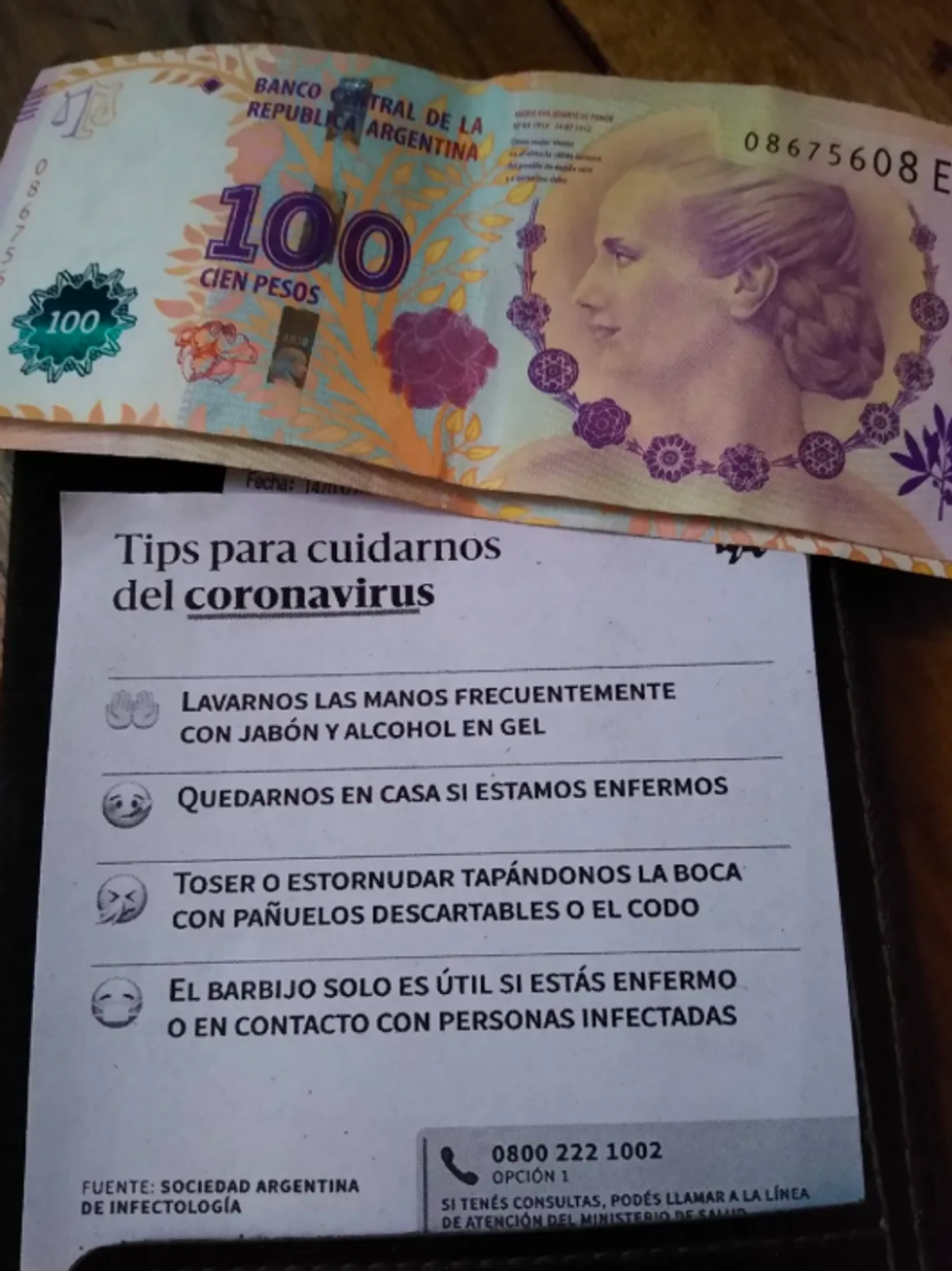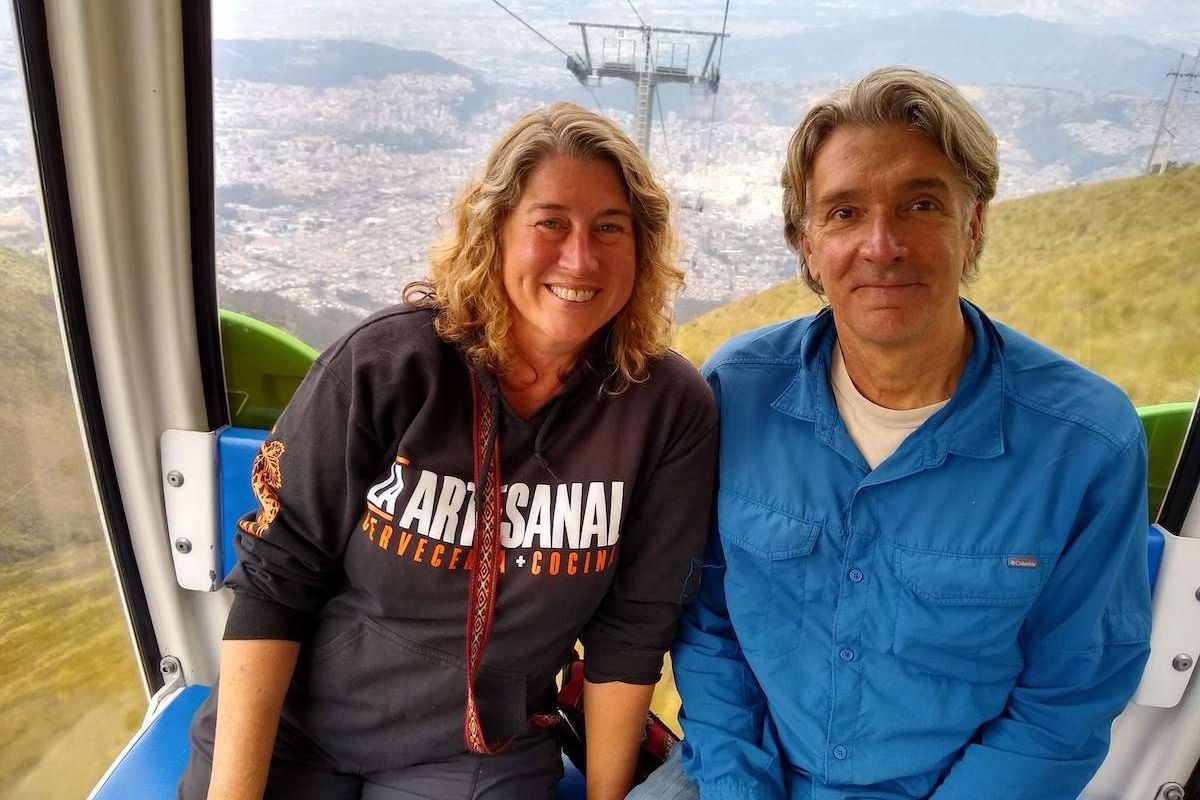No matter how much you suck at math, you're probably doing some sophisticated Coronavirus calculus these days. As we all strive to flatten the curve in hopes of preventing a health care crisis due to limited capacity in hospitals, each of us is creating our own complicated equation for answering the ultimate question, as posed by The Clash: Should I stay or should I go?
If you're sick, or if you can work from home, the correct answer is clear: stay home. But what if staying home isn't an option because you were already a long way from home when COVID-19 started spreading?
My boyfriend and I left the United States in June 2019 for a year of international travel, starting in South America. So far we have welcomed the winter solstice at a pre-Incan shamanic ceremony in Bolivia, witnessed a total solar eclipse in Argentina, learned how ancient Wari women brewers made corn beer in Peru, swum with pink dolphins in the Colombian Amazon, and gotten our gaucho on at a dude ranch in Uruguay. A few months ago, we decided we were too smitten with Latin America to leave. So instead of exploring Asia or Europe right now as we originally planned, we're still massacring the Spanish language south of the border while we follow the US news of hand sanitizer hoarding and toilet paper shortages from Buenos Aires.
Lucky for us, the virus has not yet exploded down here the way it has in the Northern Hemisphere. Nevertheless, infection rates are increasing in Latin America, and Argentina is taking COVID-19 quite seriously.
Here in Buenos Aires, anyone with questions or concerns about symptoms can call a toll-free phone number to receive advice from a medical professional. Museums are closed. Concerts are cancelled. Public gatherings are limited to 200 people. Just yesterday, we saw a few dozen gamblers queued up outside a gated casino as security guards metered their entry. A bit further down the block, a larger version of the same scene repeated itself at the single open entrance to the popular Hipodromo de Palermo, a horse racing track with a capacity of 50,000 spectators. At our favorite local bar and restaurant, two elderly regulars we've gotten to know have traded in their traditional cheek-kisses for jovial elbow-bumps. Our bill last night came with a printed reminder to wash our hands frequently, cover our sneezes, stay home if we're feeling ill, and to only use masks if we are sick or in contact with infected people.

On March 11, we received an email from the US State Department alerting us that all visitors arriving from the US, Europe, China, Japan, South Korea and Iran would be subject to a mandatory 14-day quarantine. A March 14 email alert warned that all direct commercial flights between the US and Argentina would be suspended for 30 days beginning Tuesday, March 17. It also noted that some hotels were refusing to let travelers check in, even with confirmed reservations, and that some US travelers currently under quarantine were not being allowed to leave their hotels to catch their departure flights. As a result, the US Embassy was advising US citizens to leave the country as soon as possible to avoid being stranded, as travel restrictions could change with little to no advance notice. As if on cue, Reuters reported on March 15 that Argentina is now banning entry to non-residents arriving from coronavirus-hit countries.
As you can imagine, these factors are complicating our Coronavirus Calculus. Should we return to the US a couple months earlier than planned, especially when it means leaving a low-digit region to enter a country that has now reached a level two travel advisory? We don't want to increase our chances of contracting the virus there, or in an overcrowded airport, where weary travelers from all over the globe are finding themselves crammed together for hours, waiting to be screened upon arrival. As a bonus, we will also have to find a place to live when we get back to the States, which will require even more interactions during a period of social distancing. So, from the perspective of flattening the curve, it makes more sense to stay put.
Unfortunately, staying put brings its own problems. We have been in the country since December, exploring Patagonia by car and using Buenos Aires as a home base for trips to Salta in the North and Uruguay to the South. We don't want to overstay our 90-day visas, though under these unusual circumstances we could probably extend them without much trouble.
But we have yet another factor to consider: a month-long class I'm already registered to take in May in Chiapas. Mexico hasn't yet closed its borders to US travelers, but the government is considering shutting down the northern border. In theory, that shouldn't affect travelers like us coming from the South, but our blue passports could trigger extra scrutiny no matter where we arrive from. Furthermore, a lot can change between now and May, as the virus inevitably gains a foothold in the Southern Hemisphere.
Our grand plans to spend time traveling around Medellín, Mexico City, and Oaxaca before making our way to Chiapas seem irresponsible at this point, considering how many contacts that would entail. Beyond that, we must consider what level of health care we'll have access to in Mexico, if we should need it, and how that might burden the local community.
After crunching the numbers, we have decided to fly to Oaxaca within the week. While this will necessitate a stop-over in Mexico City, we have decided against the week-long Taco Chronicles-inspired tour we envisioned and opted instead for a six-week stay in tlayuda territory, where local friends have helped us secure a studio apartment rental with a kitchen where we can self-isolate if needed. As May approaches, if my class is not canceled, we can take a bus from Oaxaca to Chiapas, where another friend has agreed to rent us another self-contained apartment.
Have we set up our equations correctly? Are we flattening the curve enough? I have no idea. To be honest, as someone who sort of sucks at math, Coronavirus calculus feels more like Game Theory than a cold, hard calculation. There is no teacher to check my work and let me know if I have arrived at the right answer. Only time will tell.





















